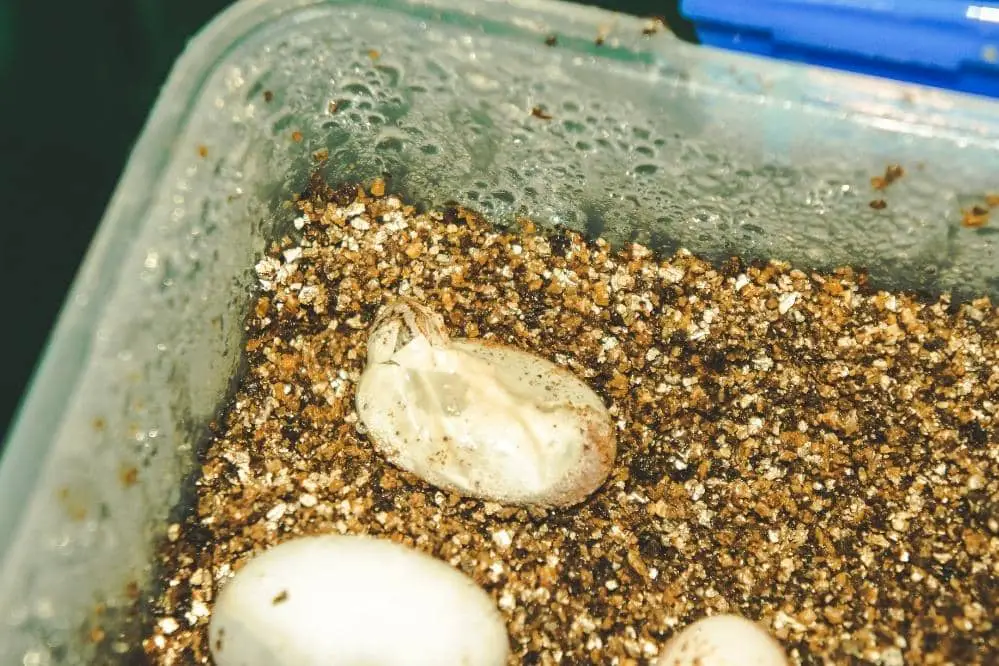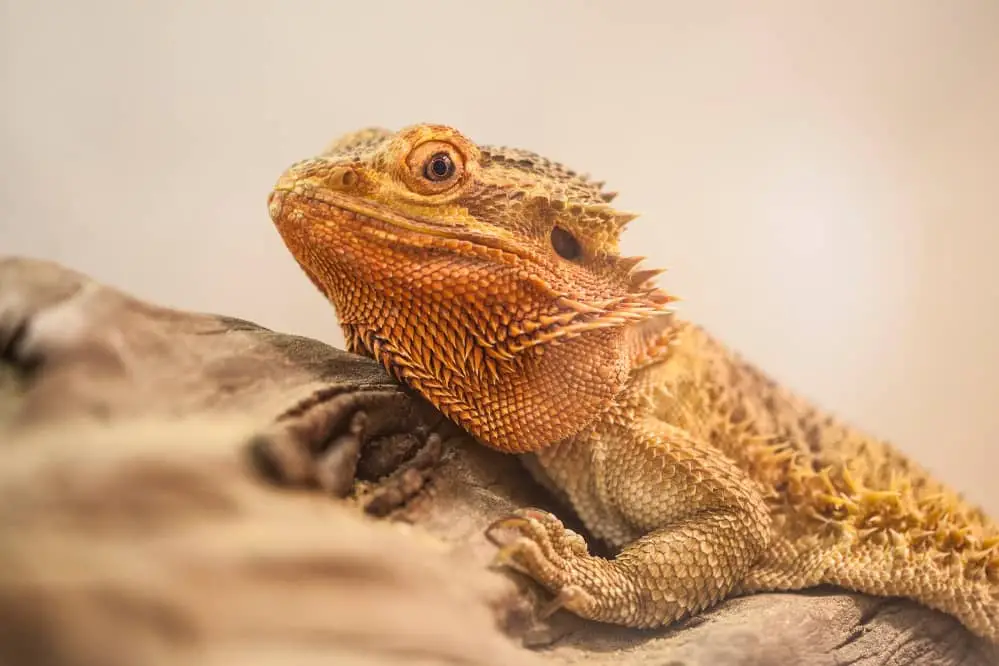Irrespective of the type of pet, if you own a female, it’s always crucial for the owner to provide her optimum care when she is pregnant. As far as bearded dragons are concerned, their breeding cycle is a bit more complex than other pets (like dogs, cats etc.), so taking care of a pregnant bearded dragon and keeping them healthy can be a difficult task at times. If you also own a female bearded dragon and looking for a article to learn about “How to take care of a pregnant bearded dragon,” this post is for you.
How Does A Female Bearded Dragon Get Pregnant / Do bearded dragons Lay eggs?
Except for a few reptiles called viviparous (who give birth to live babies), in general, most reptiles lay eggs and are called oviparous. A bearded dragon also belongs to the oviparous group of reptiles. When a female bearded dragon carries eggs in her belly, she is considered pregnant or gravid. It is interesting to know that a female beardie can get pregnant whether they mate with a male or not. However, in the absence of a male, eggs are infertile and don’t contain juveniles. However, whether the eggs are fertile or infertile, you will have to make the same effort to care for a pregnant beardie. The presence of infertile eggs does not lessen your responsibility.
When Does A Female Bearded Dragons Lay Eggs?
You can expect your female beardie to get pregnant or carry eggs once she attains its age of sexual maturity (around 18 months). In rare cases, nine-month-old female beardies can also lay eggs; however, if you want to breed, never introduce a male before 18 months of age. In addition, female bearded dragons generally lay eggs 3-4 times called clutch (over several months) and 11-30 eggs are laid in each clutch.
Signs Your Beardie Is Gravid Or Pregnant
To make necessary arrangements and provide essential care, it’s crucial for you to know whether your bearded friend is pregnant. Generally, when a female beardie is pregnant, she becomes restless, appears lethargic, sleeps more, and starts scratching and digging the floor of the vivarium to prepare a safe place to lay eggs. This scratching or digging behavior is called nesting behavior, and every pregnant beardie exhibit such behavior whether in the wild or captivity. There is a sudden and significant increase in the appetite initially, and then appetite decreases gradually as pregnancy progresses. Furthermore, some female beardies can become a bit aggressive, less social and dislike handling or social contact.
In addition to behavioral signs, you can also observe some physical signs, like enlargement of the belly and small grapes-like lumps on her belly (due to eggs).
Taking Care Of A Pregnant Bearded Dragon
Once you are sure that your bearded dragon is pregnant, you should focus on the following three factors while caring for a pregnant bearded dragon.
Preparation Of Nest Or Laying Box
When you see your female bearded dragon exhibiting nesting behavior (scratching and digging the vivarium’s floor), you should understand that your beardie is pregnant and ready to lay eggs. The first and the most crucial thing is to prepare a nest or laying box for her. If a proper laying area is not available, the bearded dragon will desperately try to dig everywhere, resulting in a stressed, exhausted, and non-responsive pet. In addition, the female will not lay eggs; a condition called egg binding or dystocia. Though there are multiple causes of dystocia or egg binding, the non-availability of a proper laying place is the most common one.

So to make a laying box or nest, make sure to use a loose substrate that is easy to dig. In addition, the substrate should have at least enough moisture (but not wet) to hold its shape when dug and not collapse easily (unlike sand). The layer of the substrate should be one foot thick, at least. Many reptile breeders and seasoned beardie owners use a mixture of sand, soil and vermiculite. Vermiculite is known to retain moisture for a long duration.
You can also use a separate plastic box to prepare a nest and place it at one corner of its tank or just outside because some pregnant beardies may not feel comfortable in a new enclosure and may not lay eggs.
Caring For The Eggs
Though caring for the eggs of a bearded dragon may appear challenging at first, with proper planning, homework and precautions, it will be a unique and memorable experience for you and your female beardie. How to care for the eggs of a bearded dragon depends on whether the eggs are fertilized or not. The simplest way to determine whether the eggs are fertilized is “candling.” However, remember that female bearded dragons usually don’t lay all the eggs at once, so don’t disturb your beardie while laying eggs and wait for the clutch to complete.
Naturally, after laying their eggs, bearded dragons bury them. So if you want to candle the eggs, wait for your bearded dragon to bury them.
Now, if the eggs appear unfertilized during candling, you can simply discard them so that your beardie may not eat them. However, if the eggs are fertilized, be more careful to handle them. You can also shift them to the incubator to maximize the chances of successful hatching. The temperature and humidity of the incubator should be maintained at 80-85°F and 75%, respectively. If the humidity level drops, you can mist the substrate but never mist on the eggs directly to avoid molding. Normally a fertilized egg hatches within 55-75 days.
Nutrition
Since during the initial phases of pregnancy, beardies are eager to eat more so make sure that enough food is available for them. In addition, calcium and vitamin requirements of a pregnant bearded dragon are higher than other beardies. Filling the body reserves and developing fat pads will help during the later stages of pregnancy when beardies appetite usually diminishes.
The following point must be kept in mind while feeding a pregnant beardie:
- Insects should make the major portion of the diet.
- Feed the vegetables that are rich in calcium.
- Give calcium supplements more frequently (preferably daily).
- Feed vitamin supplements (especially vitamin D3) twice a week
- Make sure that plenty of water is always available because digging and scratching is a strenuous physical activity and can dehydrate your beardie.

